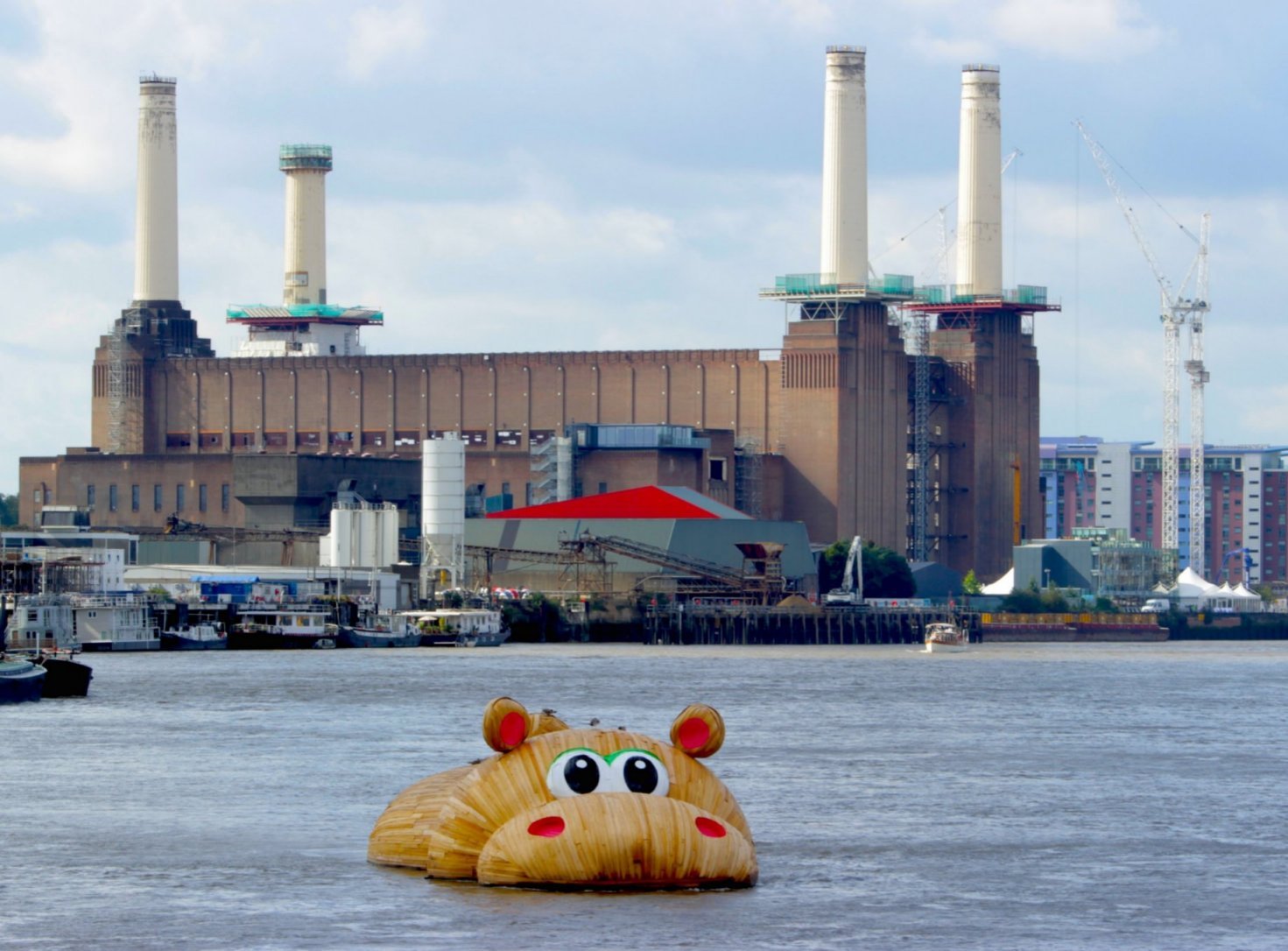
HippopoThames in front of the former Battersea power station, part of the Nine Elms redevelopment project
Photo: The Nine Elms Vauxhall Partnership
Competing against other demands
Paul Martin reveals how London’s boroughs are protecting arts and culture against rising rents and funding cuts.
London has a rich cultural life that contributes to healthier, happier, more cohesive and more prosperous communities. 60% of Londoners cite arts and culture as the best thing about living in the capital, and participation in the arts improves people’s health, wellbeing and ability to learn. The capital’s cultural offer also benefits the national economy. It feeds the UK’s creative industries, which are worth £76.9bn to the economy and which experienced employment growth at more than twice the UK average over the past year. It also attracts huge numbers of visitors, generating £3.2bn a year through cultural tourism. But without continued support, the cultural infrastructure could become a victim of London’s success.
London’s local authorities are squaring up to the task of safeguarding existing cultural assets and making the most of new opportunities
As the capital’s population approaches 9 million, competing demands for housing, shops, offices and transport are putting pressure on land use. Without careful planning, this could have a detrimental impact on cultural provision, with artists forced out by rising rents and venues shut down to accommodate new residential communities. Mindful of these challenges, London’s local authorities are squaring up to the task of safeguarding existing cultural assets and making the most of new opportunities. Against a backdrop of a 44% cut in local government funding over the past five years, we are finding innovative ways to support arts and culture that do not rely on grant funding. Boroughs are using planning powers to secure investment from developers, leveraging networks to broker opportunities for cultural organisations, and offering subsidised space through our property portfolios.
In my own borough of Wandsworth we will deliver significant new cultural workspace, venues and events programmes through the redevelopment of Nine Elms on the South Bank. This is thanks to planning agreements with private developers and a requirement that all large-scale developments have costed cultural action plans. In addition, we are using existing infrastructure to support organisations such as Battersea Arts Centre, which has a 20-year, rent-free lease agreement with us on a council building.
Other boroughs have also been working hard to deliver new cultural provision through regeneration schemes such as the emerging cultural quarters in King’s Cross and Barking. From the new outdoor performance space at Bell Square in Hounslow to a pop-up arts programme in empty shops in Havering, the Artisan Street Library in the City of London to the cultural programme on the A13 Green under the Canning Town flyover in Newham, these schemes often have a focus on revitalising high streets and town centres.
The work of the boroughs is supported and complemented by the Greater London Authority (GLA). The Mayor of London established a task force to make recommendations to protect and support music venues, given a decline of 33% of grassroots venues in the capital since 2007. Having found that 30% of artists’ studios are also under threat in the next five years from leasehold or rental agreements not being renewed, the GLA is also delivering a strategy to protect artist workspace, including through the London Regeneration Fund and a forthcoming culture and planning guide.
Local authorities and the GLA are working together to promote cultural infrastructure and protect the ecology of creative industries that rely on clusters of smaller music and performance venues, rehearsal spaces and creative office space. For example, the GLA and Barking and Dagenham are collaborating on London’s first artist enterprise zone, offering a package of incentives, including affordable workspace, to establish a cluster of artists and creative businesses.
Informal culture is also important. Last year I co-chaired a number of roundtables with the Deputy Mayor for Education and Culture, as part of Busk in London, which aims to support busking across the capital. The project resulted in a new pan-London busking scheme, including a busker’s code created by street performers, the Mayor of London, councils, businesses and the police to promote good relations and a vibrant street culture.
London boroughs and the GLA are addressing issues around cultural infrastructure and sharing ideas through the Arts and Culture Forum, a strategic network of local authority arts and culture officers supported by Arts Council England, London Councils and the GLA. As culture lead for London Borough Chief Executives, I have had the pleasure of working with the forum since its inception in 2013. It has recently developed a particular focus on the role of arts and culture in infrastructure planning and in November it will hear how cities such as Toronto are dealing with some of the challenges we face. These conversations are equipping arts and culture officers with the tools to work collaboratively with regeneration and planning colleagues, developers and the cultural sector to secure vital cultural infrastructure.
There are huge challenges facing London government and the cultural and creative sectors, but there are also fantastic opportunities. We need to work together to continue to develop cultural initiatives to ensure London remains a lively hub for artists, performers and other creatives from the UK and abroad. If we do not collaborate and innovate, London and the UK will be culturally, socially and economically poorer for it.
Paul Martin is Chief Executive of Wandsworth Council.
www.wandsworth.gov.uk
Tw @wandbc
Tw @londoncouncils
Tw @LDN_Culture
Join the Discussion
You must be logged in to post a comment.